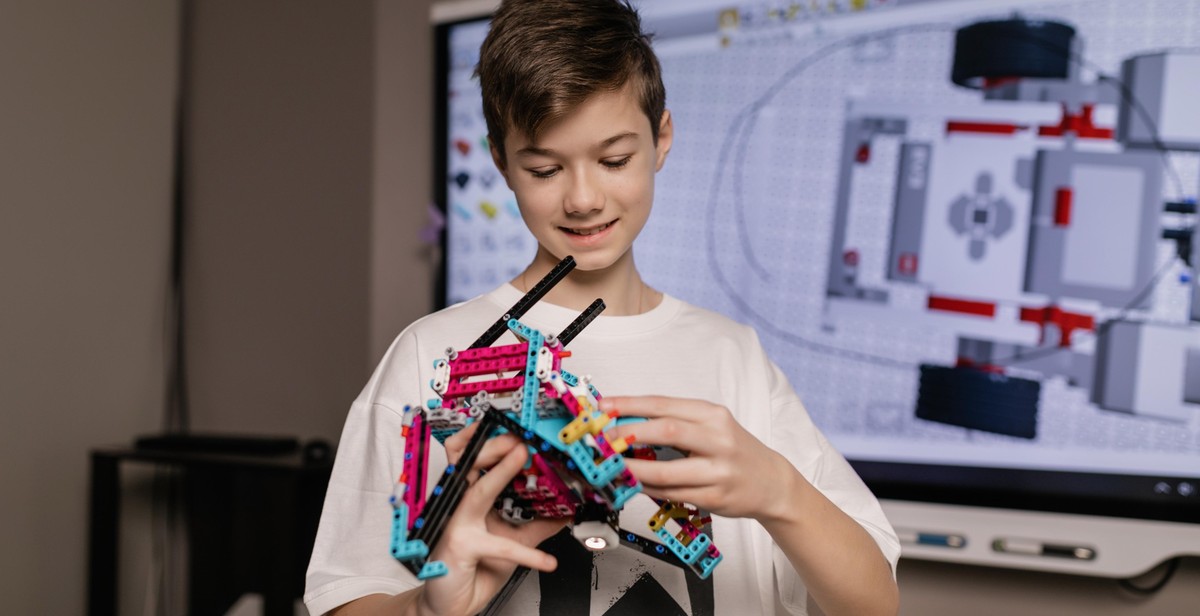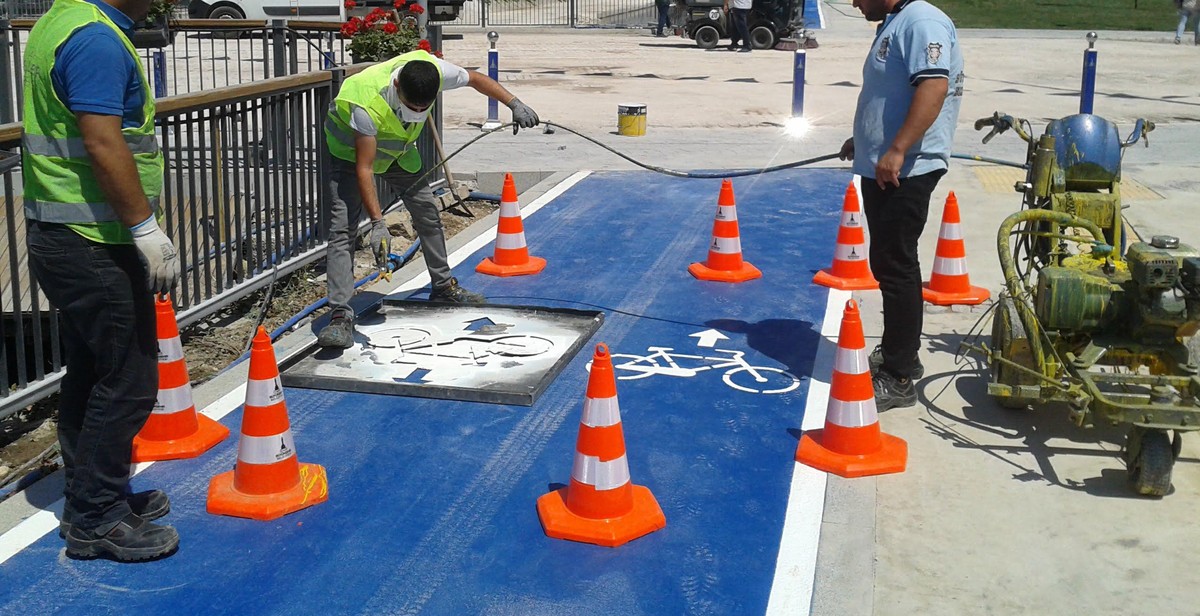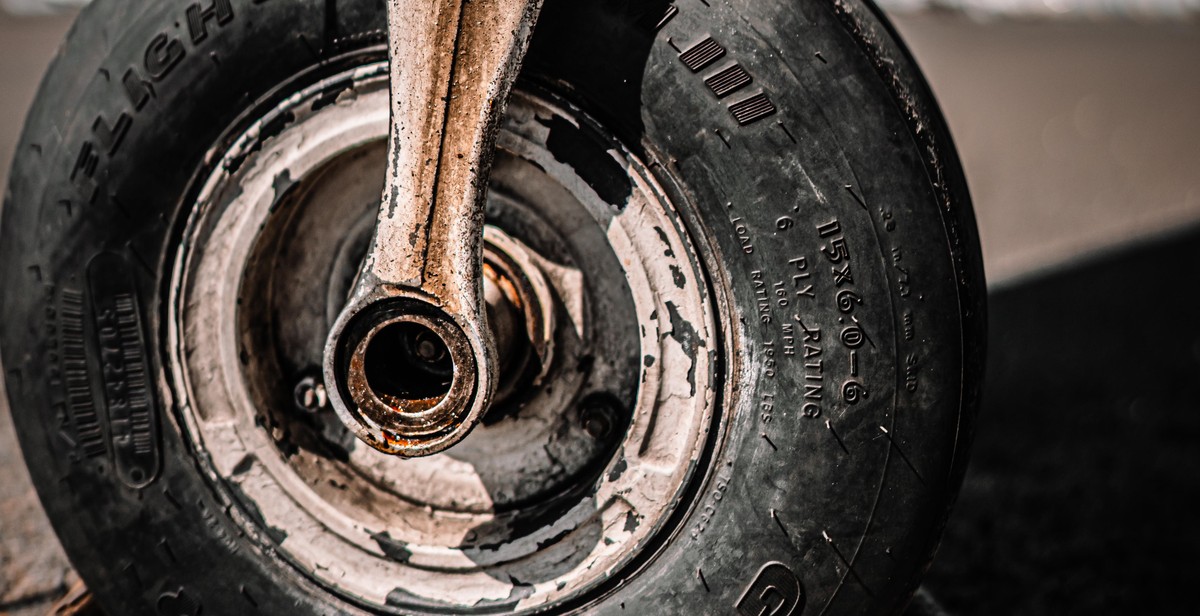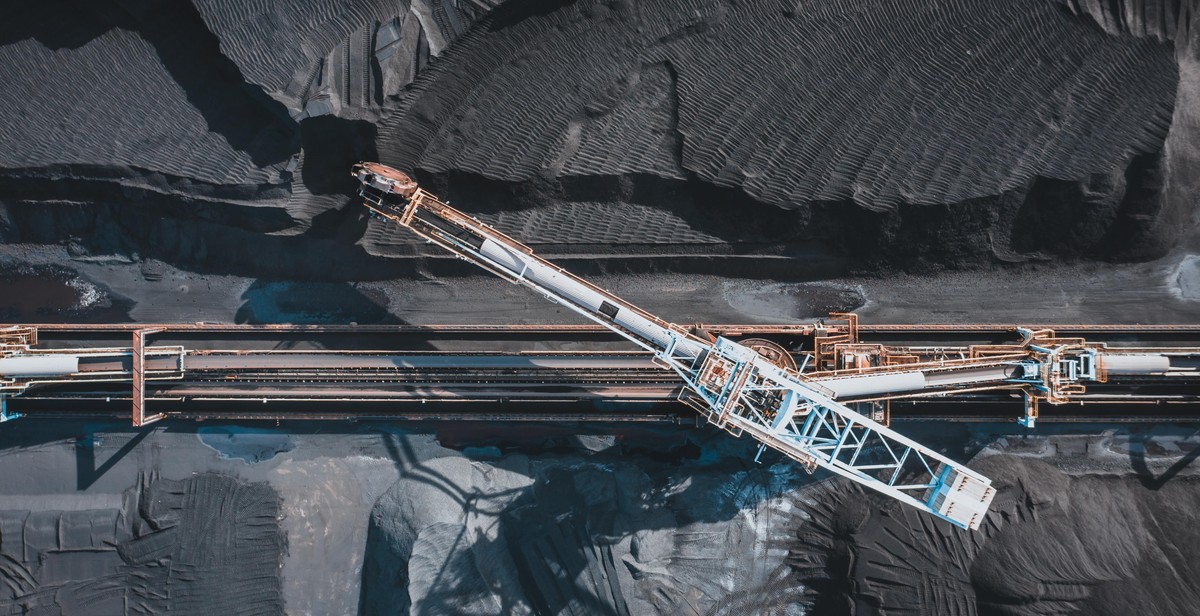Introduction
In recent years, the integration of robotics and artificial intelligence (AI) has brought about significant advancements in various sectors. One area where these technologies are revolutionizing urban development is infrastructure maintenance. With the increasing need for efficient and sustainable urban environments, robotics and AI are playing a crucial role in transforming how cities manage and maintain their infrastructure.
Traditionally, infrastructure maintenance has been a labor-intensive and time-consuming process. However, with the advent of robotics, tasks such as inspection, repair, and maintenance of critical infrastructure elements are becoming more efficient, cost-effective, and safer.
Robotic systems equipped with advanced sensors and AI algorithms can autonomously inspect bridges, roads, pipelines, and other infrastructure components, detecting potential issues and structural defects with greater accuracy and precision than human operators. This enables proactive maintenance and helps prevent catastrophic failures that could disrupt urban life and pose risks to public safety.
Furthermore, the use of robotics in infrastructure maintenance reduces the need for human workers to perform dangerous tasks in hazardous environments. Robots can access confined spaces, work at great heights, and operate in extreme conditions, minimizing the risks associated with manual labor.
This article explores the various applications of robotics and AI in infrastructure maintenance, highlighting their benefits, challenges, and potential for transforming urban development into safer, more sustainable, and resilient environments.
The Importance of Infrastructure Maintenance
Infrastructure plays a crucial role in the development and sustainability of urban areas. It encompasses various physical systems, such as roads, bridges, buildings, water supply networks, and power grids, that enable the functioning of a city or region. However, without regular maintenance, these infrastructure systems can deteriorate over time, leading to numerous challenges and hindering urban development.
The Role of Infrastructure in Urban Development
Infrastructure serves as the backbone of modern cities, facilitating economic growth, improving quality of life, and enhancing connectivity. Well-maintained infrastructure ensures efficient transportation, smooth flow of goods and services, and reliable access to utilities. It attracts investments, promotes job creation, and fosters social development.
Additionally, infrastructure supports the delivery of essential services like healthcare, education, and public safety. Properly maintained buildings and facilities provide safe and comfortable environments for residents, businesses, and visitors. Without adequate maintenance, infrastructure can become a liability, posing risks to public safety and impeding progress.
Challenges in Infrastructure Maintenance
Despite its importance, infrastructure maintenance often faces significant challenges. One of the key obstacles is the lack of sufficient funding and resources. Many cities struggle to allocate the necessary budget for regular maintenance, leading to deferred repairs and a backlog of infrastructure issues.
Moreover, outdated maintenance practices and limited technological advancements further complicate the process. Traditional methods are often time-consuming, costly, and disruptive to urban life. This highlights the urgent need for innovative solutions that can revolutionize infrastructure maintenance.
Fortunately, the integration of robotics and artificial intelligence (AI) is emerging as a transformative solution. By leveraging robotics and AI technologies, cities can enhance the efficiency and effectiveness of infrastructure maintenance, addressing the challenges and ensuring sustainable urban development.

Artificial Intelligence in Robotics
Artificial Intelligence (AI) has become a game-changer in various industries, and robotics is no exception. By integrating AI into robotics, we can create intelligent machines capable of performing complex tasks with precision and efficiency. These advancements have revolutionized the field of robotics, enabling the development of robots that can adapt to changing environments, learn from experience, and interact with humans.
Understanding Artificial Intelligence
Artificial Intelligence refers to the simulation of human intelligence in machines that can think, reason, and learn. It involves the development of algorithms and models that enable machines to perform tasks that typically require human intelligence. AI systems can analyze vast amounts of data, make predictions, recognize patterns, and make decisions based on the information provided.
Applications of Artificial Intelligence in Robotics
AI has found numerous applications in robotics, enhancing their capabilities and enabling them to perform tasks that were previously deemed impossible. Here are some notable applications of AI in robotics:
- Autonomous Navigation: AI-powered robots can navigate through complex environments by using sensors, cameras, and mapping technologies. They can analyze the data collected to make real-time decisions and adjust their movements accordingly.
- Object Recognition and Manipulation: AI algorithms enable robots to identify and manipulate objects with precision. They can recognize objects based on their shape, color, and texture, allowing them to perform tasks such as sorting, picking, and placing objects.
- Natural Language Processing: AI-powered robots can understand and respond to human commands and questions. They can process natural language inputs and generate appropriate responses, facilitating seamless human-robot interaction.
- Machine Learning: AI enables robots to learn from experience and improve their performance over time. By analyzing data and feedback, robots can refine their algorithms and adapt to new situations, making them more efficient and effective.
These applications highlight the potential of AI in robotics, opening up new possibilities for automation, efficiency, and productivity in various industries.

Robotics in Infrastructure Maintenance
Robotics has emerged as a game-changing technology in the field of infrastructure maintenance, revolutionizing the way we approach urban development. By leveraging artificial intelligence (AI) and automation, robotics offers numerous benefits that enhance the efficiency, safety, and cost-effectiveness of infrastructure maintenance projects.
Benefits of Robotics in Infrastructure Maintenance
1. Enhanced Safety: Robots can perform dangerous tasks, such as inspections in hazardous environments or handling toxic materials, reducing the risk to human workers. This significantly improves safety standards and minimizes the occurrence of accidents.
2. Increased Efficiency: Robots can complete tasks at a faster rate compared to humans, resulting in reduced project timelines. They can work continuously without fatigue, ensuring consistent productivity and minimizing downtime.
3. Cost Savings: Robotics reduces labor costs by automating repetitive tasks, eliminating the need for manual labor. Additionally, the use of robotics can prevent costly infrastructure failures through regular inspections and proactive maintenance, saving money in the long run.
Examples of Robotics in Infrastructure Maintenance
1. Inspection Drones: Drones equipped with high-resolution cameras and sensors can inspect infrastructure, such as bridges and pipelines, more efficiently and accurately than humans. They can detect structural defects, leaks, and other issues, enabling timely maintenance and preventing potential disasters.
2. Robotic Exoskeletons: These wearable devices assist workers in lifting heavy objects, reducing physical strain and preventing injuries. Exoskeletons enhance the capabilities of human workers, allowing them to perform tasks that require strength and endurance more effectively.
3. Autonomous Robots: These robots can perform tasks such as cleaning, maintenance, and repairs in urban environments. Equipped with AI algorithms, they can navigate complex surroundings, identify defects, and carry out necessary repairs without human intervention.
4. Remote-controlled Robots: These robots can access hard-to-reach areas, such as tunnels and confined spaces, remotely controlled by human operators. They can perform inspections, repairs, and maintenance tasks more efficiently, reducing the need for human workers to enter hazardous environments.
By embracing robotics in infrastructure maintenance, urban development projects can benefit from improved safety, increased efficiency, and cost savings, leading to sustainable and resilient cities.

AI-powered Drones for Inspections
One of the most promising applications of artificial intelligence (AI) in infrastructure maintenance is the use of AI-powered drones. These advanced drones equipped with AI algorithms and machine learning capabilities have revolutionized the inspection processes in various industries. With their ability to collect and analyze vast amounts of data, AI-powered drones offer several advantages over traditional inspection methods.
Advantages of AI-powered Drones
- Efficiency: AI-powered drones can quickly and autonomously inspect large areas, reducing the time and manpower required for inspections. They can cover more ground in less time, enabling faster detection of potential issues or damages.
- Precision: Equipped with high-resolution cameras and sensors, AI-powered drones can capture detailed images and collect accurate data. This precision allows for better analysis and identification of infrastructure problems, such as cracks, corrosion, or structural weaknesses.
- Safety: By deploying AI-powered drones, organizations can minimize the risks associated with manual inspections. Drones can access hard-to-reach or hazardous areas, reducing the need for human inspectors to be exposed to dangerous environments.
- Cost-effectiveness: AI-powered drones eliminate the need for expensive specialized equipment or scaffolding, resulting in significant cost savings. Additionally, the data collected by drones can help prioritize maintenance activities, preventing larger and costlier damages in the long run.
Use Cases of AI-powered Drones in Infrastructure Maintenance
The use of AI-powered drones in infrastructure maintenance is proving to be transformative in various sectors:
- Bridge Inspections: Drones equipped with AI algorithms can inspect bridges for structural weaknesses, cracks, or signs of deterioration. They can provide real-time data and generate comprehensive reports, enabling timely maintenance and preventing potential accidents.
- Power Line Inspections: AI-powered drones can inspect power lines for damages, vegetation encroachment, or potential faults. By identifying issues early on, maintenance teams can address them promptly, reducing the risk of power outages and ensuring uninterrupted service.
- Building Inspections: Drones can assess the condition of buildings, detecting any structural defects, water leaks, or damages. This allows for proactive maintenance planning, ensuring the safety and longevity of the infrastructure.
Overall, AI-powered drones have the potential to revolutionize infrastructure maintenance by improving efficiency, accuracy, and safety. Their ability to collect and analyze data quickly and autonomously makes them invaluable tools in identifying and addressing infrastructure issues, ultimately contributing to the development of smarter and more resilient cities.

Robotics and AI for Road Maintenance
The implementation of robotics and artificial intelligence (AI) in road maintenance has revolutionized the way urban development is approached. Automated road repair systems equipped with advanced technologies are now being used to tackle infrastructure maintenance challenges efficiently and effectively.
Automated Road Repair Systems
Robotic systems are being developed to automate road repair processes, eliminating the need for manual labor and reducing costs. These systems can identify cracks, potholes, and other road surface defects using computer vision and sensor technologies. Equipped with robotic arms and specialized tools, they can perform repairs with precision and accuracy.
By utilizing automated road repair systems, cities can significantly reduce the time required for maintenance, leading to improved road conditions and increased safety for drivers. Additionally, these systems can operate continuously, ensuring that road repairs are carried out promptly, minimizing disruptions to traffic flow.
Predictive Maintenance with AI
Artificial intelligence plays a crucial role in road maintenance through predictive maintenance techniques. By analyzing vast amounts of data collected from various sources, AI algorithms can predict the deterioration of roads and identify areas requiring maintenance before major issues arise.
AI algorithms use historical data, weather patterns, traffic data, and other factors to create predictive models. This enables authorities to plan and schedule road maintenance activities more efficiently, reducing costs and ensuring the longevity of infrastructure.
Through the integration of robotics and AI, road maintenance is becoming more proactive and cost-effective. By embracing these technologies, cities can enhance the quality and durability of their road networks, leading to improved urban development and a smoother driving experience for all.

The Future of Robotics and Infrastructure Maintenance
As emerging technologies continue to advance at an unprecedented pace, the future of robotics in infrastructure maintenance holds immense potential for revolutionizing urban development. With the integration of artificial intelligence (AI) and robotics, cities can address the challenges of aging infrastructure, improve efficiency, and enhance sustainability.
Emerging Technologies
Robotics, combined with AI, is set to play a pivotal role in infrastructure maintenance. Autonomous drones equipped with sensors and cameras can inspect bridges, tunnels, and other structures, detecting potential issues before they escalate. These drones can navigate challenging environments, capturing high-resolution images and providing real-time data.
Additionally, robotic systems equipped with machine learning algorithms can be employed for predictive maintenance. By analyzing vast amounts of data, these systems can identify patterns and anomalies, allowing infrastructure managers to proactively address maintenance needs, reducing costly repairs and minimizing disruptions.
Challenges
While the potential benefits of robotics in infrastructure maintenance are significant, there are challenges that need to be addressed. One major hurdle is the integration of robotics into existing infrastructure networks. Retrofitting existing structures to accommodate robotic systems may require substantial investments and modifications.
Furthermore, there are concerns regarding cybersecurity. As robotic systems become increasingly interconnected, they become vulnerable to cyber threats. Ensuring robust security measures and encryption protocols will be crucial to safeguard critical infrastructure from potential attacks.
Opportunities
The integration of robotics and AI in infrastructure maintenance presents numerous opportunities. By leveraging robotics, cities can reduce the risks associated with human inspection, ensuring the safety of workers. Moreover, the use of autonomous drones and robotic systems can significantly expedite inspection processes, leading to cost savings and minimizing disruption to the public.
Additionally, the implementation of predictive maintenance through robotics can optimize resource allocation and extend the lifespan of infrastructure assets. By identifying maintenance needs in advance, cities can prioritize and allocate resources efficiently, enhancing overall infrastructure performance.
| Opportunity | Benefits |
|---|---|
| Efficient inspection and data collection | Real-time data, reduced inspection time |
| Predictive maintenance | Cost savings, minimized disruptions |
| Worker safety | Reduced risks, improved safety |
| Optimized resource allocation | Efficient use of resources, extended asset lifespan |
In conclusion, the future of robotics in infrastructure maintenance holds immense promise. By leveraging emerging technologies, cities can overcome challenges, capitalize on opportunities, and revolutionize urban development by ensuring efficient, safe, and sustainable infrastructure.
